Can Wolves Be Domesticated? The Untold Truth
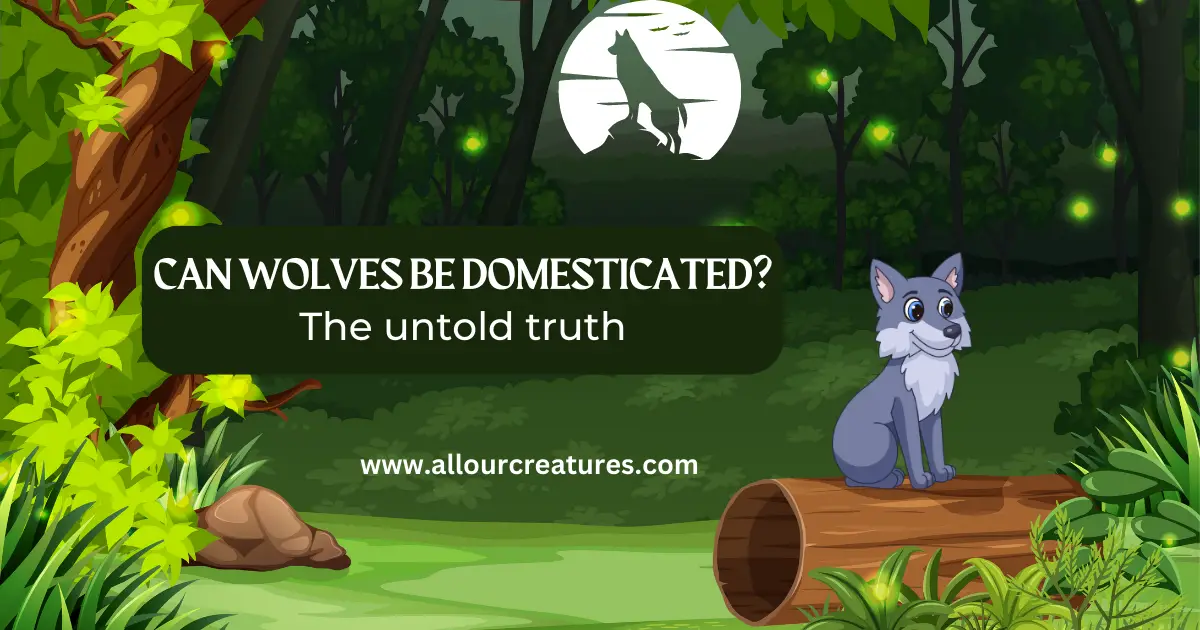
Are you fascinated by the potential domestication of wolves and their unique characteristics? Can wolves be domesticated? Explore further into this captivating topic and gain a deeper understanding by diving into this article. Discover the complexities of the domestication process, the differences between wolves and pet dogs, and the archaeological evidence that sheds light on this fascinating subject.
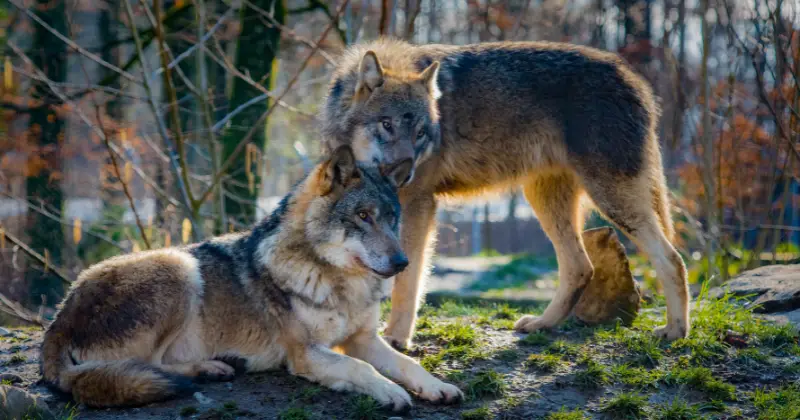
The domestication of wolves has long fascinated evolutionary biologists and researchers. While wolf pups exhibit some similarities to pet dogs, such as facial expressions and pack behavior, there are significant differences. We will help you walk through it. Embark on a journey of knowledge and exploration into the world of wolves and their potential as domesticated animals.
Contents
Table of Contents
Can Wolves Be Domesticated? Explained

Wolves have fascinated humans for centuries, often occupying a prominent place in our mythology and folklore. However, in today’s society, many people wonder whether these wild animals can be domesticated, just like their canine relatives. After all, dogs were once wolves too, right?
Well, it’s a bit more complicated than that. While it’s true that wolves and dogs share a common ancestor, domestication is a process that takes thousands of years. In fact, dogs were first domesticated between 14,000 and 29,000 years ago in northern Eurasia. And although wolves can certainly be tamed to some extent, they cannot be fully domesticated like dogs, as their wild instincts run deep.
So, while you might see some videos of wolves cuddling with their human caretakers, it’s important to remember that these are still wild animals, with unique needs and behaviors that can’t be ignored.
Wolves and Domestication

Evolution of Dogs from Wolves
Wolves are known to be the ancestors of modern-day dogs, with their domestication occurring between 33,000 and 11,000 years ago. During this period, some wolves began to engage with humans, eventually adapting to life alongside them.
This marked the beginning of their evolutionary journey, transforming from wild, fierce wolves to the loving, loyal dogs we know today.
As humans and wolves started to interact more, it’s believed that those wolves with more docile traits were favored and bred, further developing their companionship with humans. In time, these changes in behavior and appearance led to the wide variety of dog breeds we have now.
Wolf-Dog Relationship
The relationship between wolves and dogs can be traced back to their shared ancestry. However, it’s important to understand that while dogs are descendants of wolves, they have undergone significant changes in their behavior and temperament through domestication.
Wolves remain inherently wild, and attempts to domesticate them have proven difficult, mainly because their natural instincts are deeply ingrained through countless generations.
On the other hand, dogs have been bred and raised alongside humans for thousands of years, adapting to our lifestyles and becoming increasingly suited to cohabitation. Thus, the wolf-dog relationship has become quite distinct over time.
It’s essential to keep in mind that tame wolves and domesticated dogs are fundamentally different. While some wolf-dog hybrids exist, keeping wolves or wolf-dog mixes as pets is generally not recommended. Wolves’ untamed instincts and unpredictable behavior pose risks to both their owners and other people.
In summary, the process of domestication has led to the evolution of dogs from their wolf ancestors. While they share a common lineage, the two species have diverged significantly in terms of behavior, compatibility with humans, and their roles in our lives.
Why Does Nobody Have Wolves As Pets? Watch this
Challenges in Rearing Wolves

Attachment and Socialization
Rearing wolf puppies requires a great deal of patience and understanding, especially when it comes to attachment and socialization. Wolves, being wild animals, have different socialization patterns than dogs. While dogs easily form attachments with their human caretakers, wolves may not develop a strong bond if not hand-reared from a young age.
According to a study, even when raised like dogs, wolves still hold on to their wild instincts and may not develop the same level of attachment as domesticated dogs.
In the wild, wolves are known to form strong social bonds within their pack, whereas a wolf raised in captivity may not have the same opportunity to build relationships with its human caretakers or other animals. This makes socialization with both humans and other pets quite challenging. Moreover, they may also have a natural fear of strangers, which may pose a problem in daily life.
Training and Behaviors
Another challenge that comes with rearing wolves is training and managing their behaviors. While pets like dogs can be trained to follow commands, experience comfort and enjoy cuddles with humans, wolves remain inherently different due to their wild instincts. They can be tamer and more well-behaved compared to their wild counterparts but may never be fully domesticated.
Wolves have strong predatory instincts, making it challenging to manage their behavior, especially around smaller animals or children. Training a wolf is also more time-consuming and requires more patience and consistency than a dog. It’s important to remember that a wolf’s ancestors had to survive in the wild without constant human guidance, and these instincts can’t be erased simply by rearing them in a domestic environment.
Ultimately, considering the challenges in rearing wolves, including attachment and socialization, training, and managing their wild behaviors, most people do not recommend raising a wolf as a pet.
Comparing Wolves and Domesticated Dogs
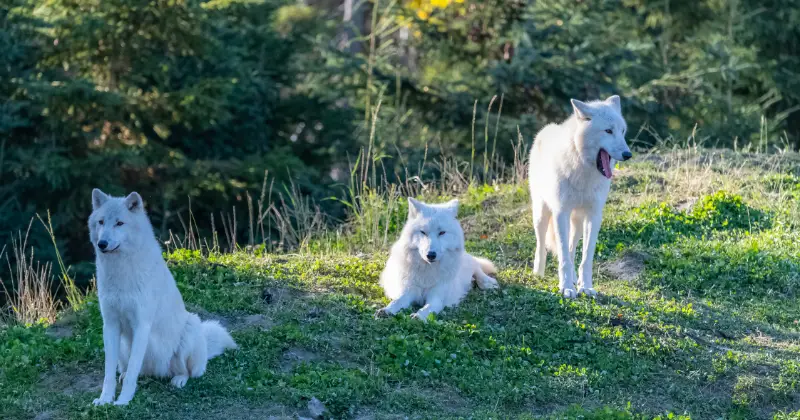
Gray Wolf Vs Labrador Retrievers
When looking at wolves and dogs, there’s a clear difference between their appearances and behaviors. Specifically, let’s take the Gray Wolf and Labrador Retrievers as examples. Gray wolves are wild animals, with a strong instinct to hunt and live in packs.
They have a more robust build, with larger heads and teeth, compared to Labrador Retrievers, which are known for being friendly, outgoing, and excellent companions.
Like most domesticated dogs, Labrador Retrievers have been bred over generations for specific traits such as temperament, intelligence, and appearance. This has led to a variety of breeds that differ greatly from their wild wolf counterparts. On the other hand, gray wolves have evolved naturally through survival of the fittest, making them better suited for life in the wild.
Instincts and Companionship
One significant difference between wolves and dogs is their instincts. While dogs have been domesticated for centuries, their wolf ancestors still possess the natural instincts to hunt, protect their territory, and live in packs. This behavior can be seen in domesticated dogs through their loyalty to their owners and their tendency to form strong bonds with their human companions.
Companionship, however, is where dogs truly shine. Dogs have been bred to live harmoniously with humans, which has led to them developing strong bonds and trust with their owners. On the other hand, wolves are more likely to view humans as potential threats due to their lack of exposure to human interaction and their natural instincts.
In summary, while there are clear differences between wolves and domesticated dogs in terms of appearance, instincts, and companionship, it’s important to remember that dogs have been shaped by human intervention to live closely with us, while wolves have remained wild and adapted to their natural environment.
Human-Wolf Interaction
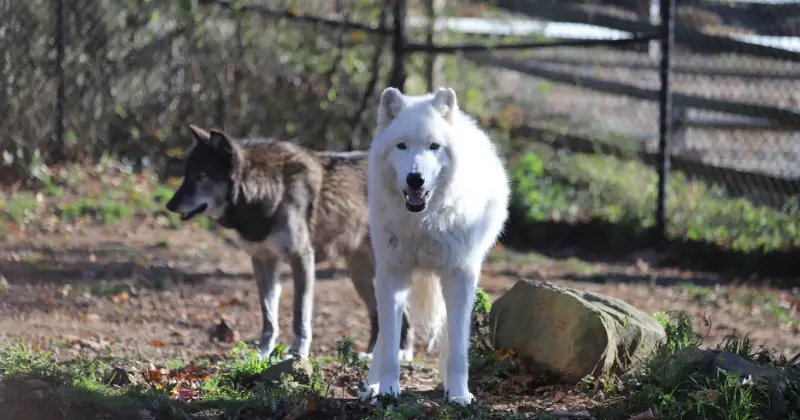
Socialized and Hand-Raised Wolves
Wolves are wild animals but can be tamed if raised by humans from a young age. Hand-raised wolves, especially those that have been socialized with humans during their puppyhood, can develop a certain level of affinity towards their human acquaintances.
It’s important to note, however, that despite this level of socialization, wolves still retain their wild instincts and should never be considered domesticated like dogs.
In some cases, wolves raised by humans can exhibit affectionate behavior, such as greeting and licking their handlers. While these behaviors may seem similar to what we typically see in dogs, they do not mean that the wolf has become completely dependent on its human companions or that it has lost its inherent wild nature.
Affinity and Support
There have been experiments conducted on the social interaction between humans and wolves. These studies have shown that socialized wolves can indeed form bonds with their human handlers, suggesting that there is potential for a level of mutual support and understanding between the two species.
Despite this, it is essential to remember that wolves are still wild animals, and their instincts cannot be fully suppressed.
In conclusion, while wolves can develop a connection with humans through socialization and hand-raising, they are by nature wild animals. Attempting to domesticate a wolf could pose risks for both the animal and its human handlers. Wolves should be respected and appreciated for their wildness, and their relationship with humans should be approached with caution and understanding.
Potential Risks and Concerns
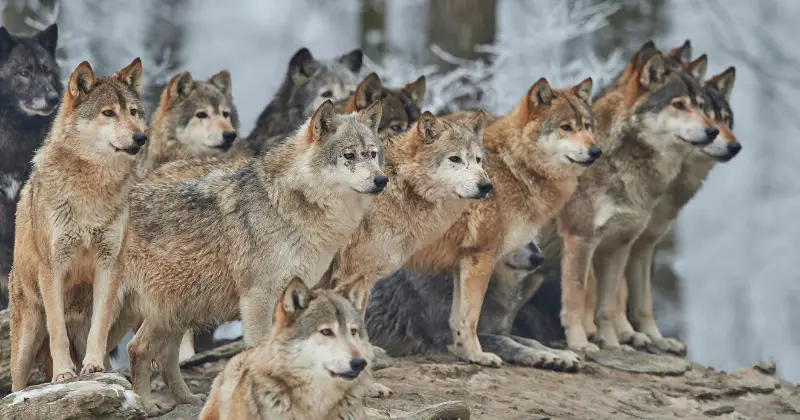
Aggression and Protection
Wolf-dog hybrids are a mix of wild instincts and domesticated traits, which can lead to some unpredictable behaviors. Though they might display signs of attachment and affection towards their owners, their underlying wild instincts can also result in aggressive tendencies.
While it’s true that wolves are naturally protective, this protective nature combined with their aggressive tendencies can cause problems in a domestic setting.
Moreover, training a wolf-dog to be obedient and well-behaved requires significantly more time and effort than training a regular dog. So, even though the idea of having a fierce and loyal protector sounds appealing, keep in mind that managing a wolf-dog’s aggression can be quite challenging.
Coyotes and Livestock
Another concern about keeping wolf-dogs as pets is their interaction with other wildlife, especially coyotes and livestock. Wolves and coyotes are natural enemies, so a wolf-dog living near coyotes may become more aggressive or territorial. This could lead to fights or other dangerous situations for both the wolf-dog and the nearby wildlife.
Livestock, on the other hand, can be at risk if a wolf-dog’s hunting instincts are triggered. They might see livestock as potential prey and be tempted to attack. This can lead to devastating losses for farmers and be a major source of conflict between wolf-dog owners and the surrounding community.
Considering these risks and concerns, it’s important to carefully evaluate whether a wolf-dog hybrid is the right fit for your household and environment. While the idea of owning a powerful and unique animal might seem appealing, the reality may be more challenging than anticipated.
Wolves’ Diet and Habitat

Carnivores and Feeding Habits
Wolves are carnivores, which means they predominantly eat meat. They usually hunt large ungulates, such as deer, moose, elk, caribou, bison, and musk ox. On average, a wolf can survive on 2.5 to 3.7 pounds of meat per day. Still, they require 5 to 7 pounds of meat daily for successful reproduction. Although they are amazing hunters, they’re not always successful, and sometimes they scavenge when needed.
Let’s break it down:
- Primary food source: Large ungulates
- Daily consumption: 2.5 to 3.7 pounds (maintenance) / 5 to 7 pounds (reproduction)
The Importance of Space
Space is super important for wolves. They need ample room to roam, hunt, and establish their territories. Wolves can live in many different types of habitats, including forests, grasslands, and tundra, as long as there’s an adequate number of large ungulates in the area.
Their territories can range from 50 to 1,000 square miles, depending on the size of their packs and available prey. They are historically known to have covered almost every type of habitat that had large ungulates present.
Take a look at their habitat preferences:
- Habitats: Forests, grasslands, tundra
- Territory size: 50 to 1,000 square miles
The Science of Dog Domestication

So, let’s talk about the mystery of dog domestication. Where did our beloved furry friends come from? It all started with wolves, and through a series of events, they turned into the domesticated dogs we know and love today.
It’s pretty fascinating how this transformation took place. The general idea is that some brave wolves started hanging around human camps, drawn by the food.
Over time, humans and these friendly wolves formed a bond. The friendlier wolves had better chances of surviving and reproducing, so these traits got passed on to future generations. Boom! Domesticated dogs were born.
Now, where did this happen? Well, there’s some debate about that. One study suggests that dogs might have been domesticated more than once, with separate wolf populations being domesticated in both Europe and Asia. How cool is that?
However, this whole process didn’t happen overnight. In fact, it took thousands of years for wolves to fully evolve into the various breeds of dogs we see today. Research has shown that the dog was the first domesticated species, but pinning down when and where this domestication took place has been a challenge for scientists. Recent DNA studies have shed some light on this mystery, but we still have a lot to learn.
Now, can wolves still bond with humans today? Interestingly, yes! According to a study, even wolves raised in captivity show the ability to form attachments with people, displaying similar behaviors to those seen in domesticated dogs. But keep in mind that modern wolves are still wild animals, and the process of domesticating them wouldn’t be as simple as bringing a puppy home.
So there you have it – a casual look into the fascinating science of dog domestication. It’s incredible to think that our canine companions originally came from the wild, but through their long history with humans, they’ve become our best friends.
Conclusion: Can Wolves Be Domesticated?

Understanding the domestication potential of wolves requires considering their natural instincts as pack animals and their interactions with humans. Unlike dogs, adult wolves retain their wild behaviors and require expert handling and specialized care. The archaeological record provides insights into the historical relationship between humans and wolves, shedding light on the complexities of domestication.
Wolves reach sexual maturity at around two years old, making their domestication challenging. Many organizations have made strides in understanding captive wolves through specialized care, human contact, and archaeological evidence. They have also identified the distinctions between these majestic creatures and our beloved domesticated dogs.
FAQs
Q: How does contact with humans contribute to understanding captive wolves?
A: Contact with humans allows researchers to study the behavior and reactions of captive wolves in a controlled environment. It provides valuable insights into their social dynamics, response to human presence, and overall adaptability.
Q: What is the significance of the archaeological record in understanding wolves?
A: The archaeological record provides valuable evidence of the historical relationship between humans and wolves. It helps researchers analyze the coexistence, interactions, and potential domestication of wolves in ancient civilizations.
Q: What are the differences between domesticated dogs and adult wolves?
A: Domesticated dogs have undergone generations of selective breeding, resulting in various physical and behavioral differences from adult wolves. Dogs display traits such as increased sociability, diverse coat colors, and modified facial expressions that distinguish them from their wild wolf counterparts.


